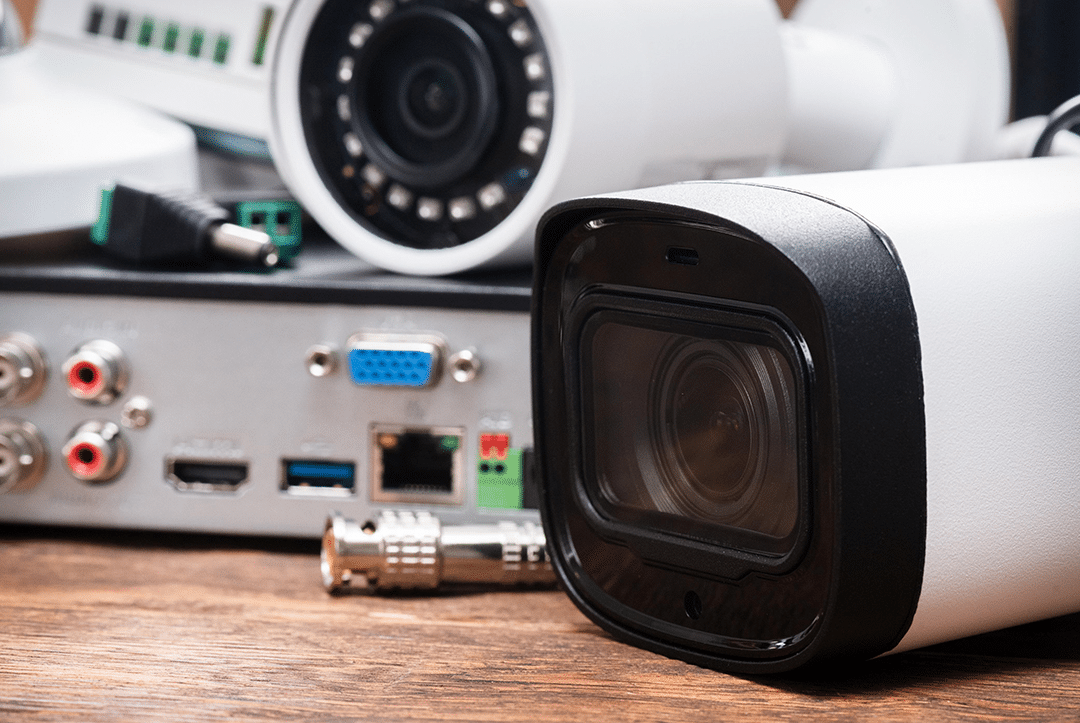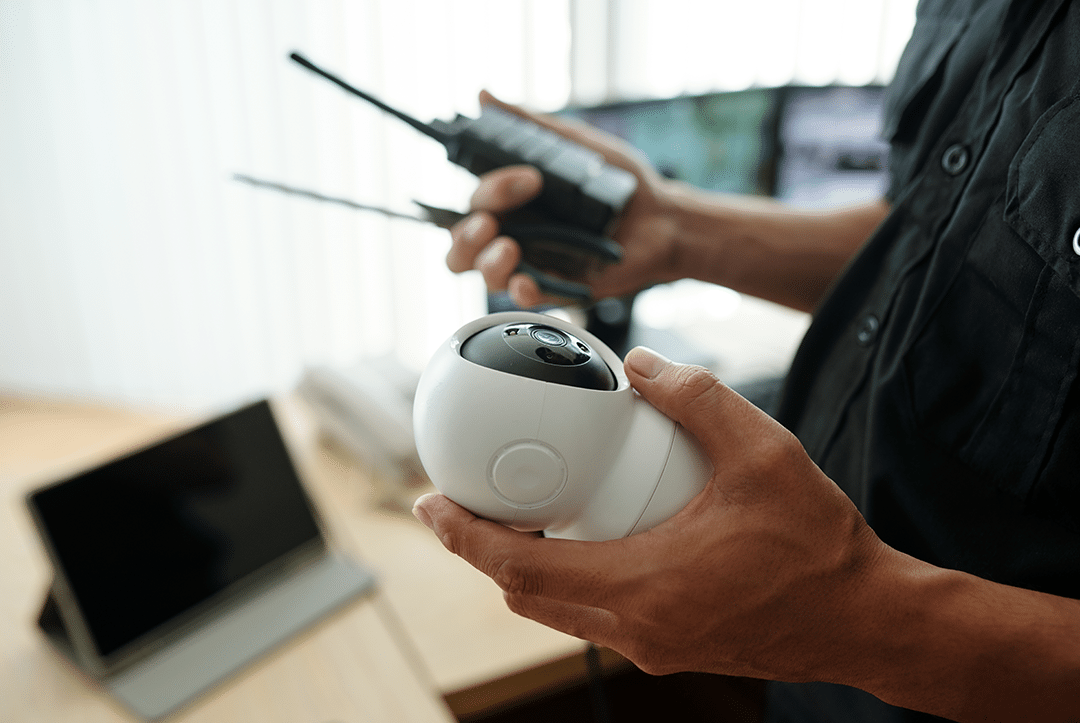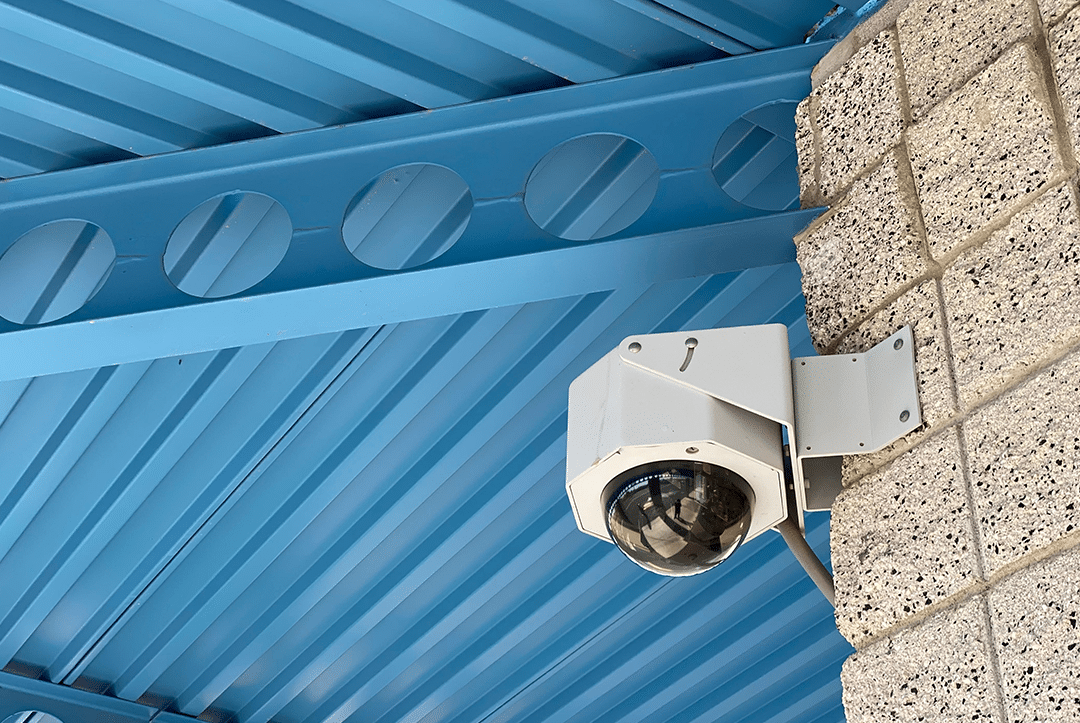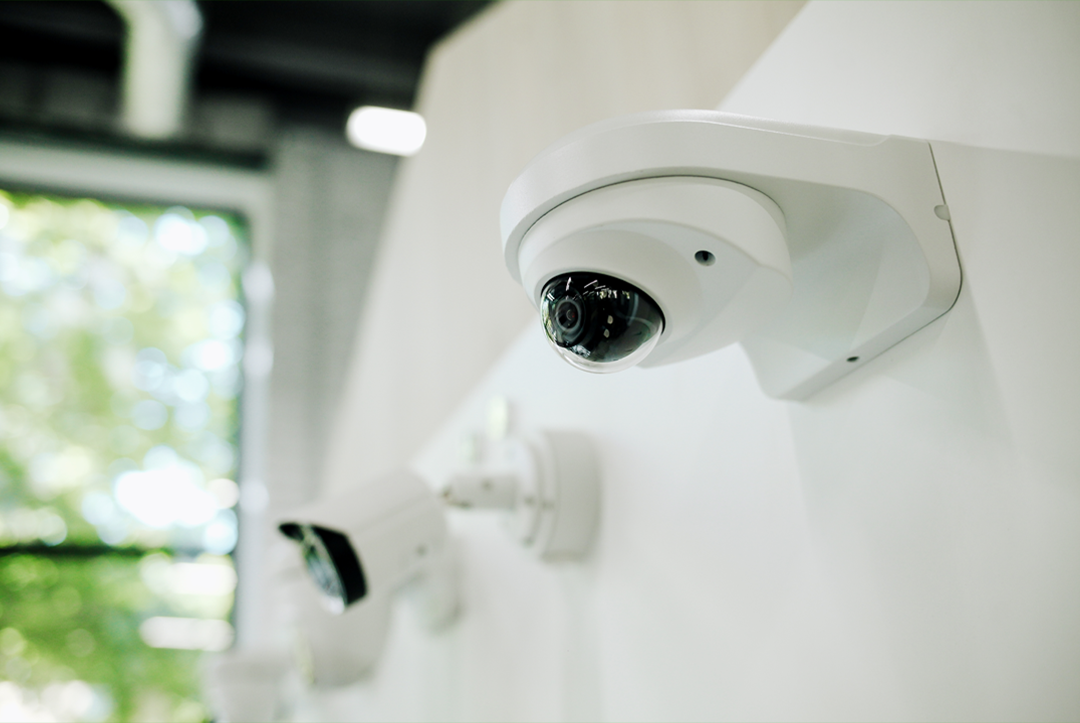Securing All Spaces: Comparing Indoor vs. Outdoor Security Cameras
Today, the threat of property or inventory theft is higher than ever. Regardless of your business type or how secure the structure is, relying on conventional locks, heavy-duty windows, or gates isn’t enough.
Modern measures are inadequate without security cameras. For buildings with camera safeguards like educational and government facilities, parks, and large venues, high-definition surveillance is essential regardless of the size or nature of the space.
Below, we’ve provided a comprehensive guide highlighting the similarities between indoor vs. outdoor security cameras for business, as well as best practices for buying and using each.
The Role of Modern Security Cameras
Modern security cameras are highly sophisticated and perform a wide range of functions, making them valuable to your operation. Security cameras record threats, send instant alerts, and can assist first responders.
Advanced systems can integrate with other security technologies such as programmed locks, digital units, Wi-Fi networks, phone apps, and IoT-based equipment. They’re capable of adapting to nearly any indoor or outdoor environment, which makes them easy to install virtually anywhere.

Indoor Security Camera Systems
The best commercial indoor security cameras are designed for controlled environments. They adapt to lighting conditions, indoor activity, room layouts, and interior smart systems while offering flexibility for many different security and privacy issues.
Lighting Control
Whether it’s powered or natural, lighting plays a role in how well your security camera works. Good lighting conditions provide clear surveillance with high-definition images, and poor lighting can limit your camera’s viewing range and clarity.
Let’s look at three main lighting conditions that impact security camera performance.
Light Sources
- Fluorescent lights: Indoor cameras must adapt to flickering fluorescent lights, which can cause light and color level issues.
- LED lights: If building managers don’t manage their LED lights, they can also flicker.
- Natural light: Windows and skylights project natural light, which changes throughout the day.
Smart Lighting Systems
-
- Automatic adjustment: Smart lighting systems are often left on auto-pilot and adjust to lighting conditions, room conditions, and movements.
- Integration with cameras: When the camera detects motion, it triggers the lights. In turn, the smart lights automatically turn on to provide light for the camera.
- Testing under different conditions: During camera installation and adjustment, try testing it under different lighting conditions.
Complex Layouts
When setting up security cameras in indoor spaces, it’s important to position them strategically if you have multiple rooms, hallways, and blind spots. Before you begin the project, conduct a comprehensive assessment of the building’s interior design for optimal camera placement.
Start by mapping out all entry and exit points, high-traffic areas, and potential hiding spots. 3D mapping tools can provide a detailed look at the layout and help you decide where to position the camera. Mapping all points helps prevent you from missing any critical monitoring areas.
Once you’ve mapped out the space, install wide-angle lenses for wider coverage. Add telephoto lenses for more focused monitoring in case you need to zoom in, and make sure the fields overlap so that you don’t leave an area unmonitored.
Remember: Your goal is to create a network of cameras that work together to provide complete indoor coverage.

Building System Integration
Security cameras can integrate with at least a dozen other smart systems, such as voice assistants, lighting, door locks, HVAC controls, smartphone apps, and motion sensors. These systems work together to enhance security and streamline your operations.
Access Control Systems
-
- Synchronizing data: You can integrate cameras with your access control system. Entry and exit data is synchronized with video footage to provide a full view of who enters and exits the building.
- Elevator systems: Connect your security camera to the elevator system to monitor movement between floors and get more vertical security coverage.
Building Management Platforms
- Centralized Control: Link cameras with building management platforms for centralized control and monitoring, which enables your security personnel to manage all systems from one interface.
Power and Connectivity
Something else to consider when you’re setting up indoor surveillance is the need for reliable power and network connectivity.
Consider using Power over Ethernet (PoE) to streamline your installation. PoE provides electrical power and data through a single Ethernet cable so you can network devices like IP cameras. With PoE, you don’t need separate power sources for your camera configuration–which makes your setup more efficient and less cluttered. Plus, you reduce the number of wires you need to manage.
Also, incorporate redundant power sources by installing Uninterruptible Power Supplies (UPS) to provide backup power during short outages.
If you’re securing a larger facility, add backup generators to keep your cameras running during power failures. Make sure your building’s power and network infrastructure can handle the bandwidth required for multiple high-resolution camera feeds (which helps prevent feed lag).
Privacy Concerns
Security cameras for business use can violate privacy rights or regulations, and because cameras view individuals and groups in secure areas, privacy should be a top priority. You need to strike a balance between security and privacy in sensitive environments such as schools, local, state, or federal government facilities, or corporate offices.
Privacy Regulations
- Explicit Consent: Adhere to privacy regulations by obtaining consent for surveillance. Make sure you notify individuals of the presence of cameras.
- Privacy Masking: Use privacy masking to block out areas where surveillance is not permitted,
Data Access and Retention Policies
- Clear Policies: Establish clear policies for data access, retention, and deletion. Policies should protect privacy rights and comply with legal requirements.

Outdoor Security Camera Systems
Outdoor security cameras are designed for environments where natural light, weather, and outdoor settings present unique challenges. Although you’ll consider many of the same factors during installation as indoor cameras, the application or execution may differ, depending on your situation.
Environmental Resilience
One of the biggest differences between indoor and outdoor security cameras is that outdoor units have to withstand harsh environments and weather conditions, including (but not limited to) extreme temperatures, high winds, changing humidity levels, and storms.
Weatherproof Ratings
Cameras with an IP66 or higher rating provide weather resistance from rainwater and dust.
Temperature Range
Ensure your cameras are designed to operate within the typical climate of your location, especially if you’re in an area with extreme temperatures.
Corrosion Resistance
Security cameras with corrosion-resistant materials (stainless steel, aluminum alloy, titanium, or reinforced polyamides) are the best option if you’re in a coastal or industrial area.
Wide-Area Coverage
Indoor layouts have a limited surveillance range while outdoor environments often have broader ranges (cameras that can pivot 360 degrees are ideal). Purchase outdoor security cameras that can detect objects from far away with wider coverage areas and monitor larger spaces like parking lots or college campuses.
For a better view, use high-mounted cameras or aerial surveillance. These options give you a bird’s-eye view of the area and can help identify unusual activity. Video analytics can help you track objects or people across different camera views and follow an object as it moves from one camera’s view to another.
Lighting Variability
Outdoor lighting conditions can be inconsistent and unpredictable compared to indoor lighting. Choose outdoor security cameras that can adapt to changing conditions.
- Low-Light Performance: Use cameras with excellent low-light performance and maintain visibility during nighttime hours.
- Wide Dynamic Range (WDR): WDR cameras handle areas with strong contrasts between light and dark. They maintain clear imaging regardless of lighting conditions.
- Supplemental IR Illuminators: Use infrared (IR) illuminators to enhance nighttime visibility and provide additional lighting that’s invisible to the naked eye.
Remote Power and Connectivity Challenges
If you’re mounting security cameras in remote locations, you’ll need to be prepared for power and connectivity issues.
Use generators and backup batteries to keep your cameras running when there’s no main power source available. You’ll have peace of mind knowing your cameras will keep working, no matter where you put them.
In remote areas, you might not have access to the Internet, but cellular or satellite connections can keep your cameras linked. One idea is to use edge computing, which allows cameras to process data on the spot instead of sending everything back to a central system. Edge computing reduces the amount of data you need to transmit, which helps when you’re dealing with limited bandwidth.
Legal Compliance in Public Spaces
Outdoor surveillance in public areas must navigate complex legal and ethical considerations.
- Regulatory compliance: Comply with local and national guidelines to avoid legal issues and unethical practices.
- Clear signage: Install clear signage that informs the public about the presence of security cameras.
- Data handling protocols: Implement strict data handling and retention protocols for handling and retaining to protect privacy.

What Do Indoor and Outdoor Camera Systems Have in Common?
There are distinct differences between indoor vs. outdoor security cameras, but they have a lot in common that makes them both valuable security systems in any industry.
Here are a few commonalities you may find in both types (indoor and outdoor) that distinguish them from other cameras.
High-Resolution Imaging
Both indoor and outdoor cameras provide clear and detailed images for surveillance. High-definition images allow you to identify objects or individuals with precision.
Image Clarity
High-resolution cameras capture fine details and can help identify objects or people from hundreds of yards away, regardless of your or the camera’s location.
Optical Performance
Improvements in camera electronics and image sensor design now enable cameras to provide highly detailed surveillance at longer distances and wider areas.
Real-Time Analysis
Real-time processing of footage is critical to effective threat detection and response in both indoor and outdoor settings.
- On-chip processing: Provides real-time analysis and data on the camera chip, and offers immediate threat detection without latency.
- Object detection and motion tracking: Real-time analytics with features such as object detection, motion tracking, and behavioral analysis.
Scalability
Your security camera network and infrastructure should be able to expand and evolve as your needs change.
With a system that adapts easily, you can add more cameras and cover a larger area without starting from scratch (such a system can also adapt easily)–and you won’t be stuck with outdated equipment that can’t keep up with your growth.
Future-proofing is essential for any organization that’s growing and will have greater security needs down the line and helps ensure your investment is long-lasting. Scalability also saves time and money in the long run, as you won’t need to replace your entire system at each growth point.
Integration Capabilities
Both indoor and outdoor security cameras have advanced integration capabilities to connect with other systems or equipment in your business network.
- Distributed Security Systems: Cameras should be part of a larger distributed security system, including access control, alarm, and emergency response protocols.
- Data Sharing: Share data and response capabilities across multiple security subsystems to improve safety and efficiency.
Data Management
Effective storage and retrieval of video data are crucial for both indoor and outdoor environments.
Data Retention
You’ll want to establish criteria for retaining or deleting data as needed–particularly in sensitive areas. Creating a protocol for data retention or deletion keeps you compliant with industry standards as well as state and/or federal laws.
Cloud Readiness
Cloud storage is safer and more reliable than on-site storage and provides reliable access and backup capabilities.
Cybersecurity
If your cameras are connected to an internal network or the Internet, cybersecurity will be an immediate concern. Security cameras connected to the internet are instant—and sometimes easy— targets for hackers.
Start with strong data encryption to protect your cameras. Encryption scrambles the information your cameras send and store, which makes it harder for anyone to intercept or decipher. Camera software should always be up to date, as new updates can fix security problems or add protective features.
Don’t forget about access control. Set up secure ways for people to log into your camera system, like strong passwords, two-factor authentication, or biometric fingerprints.
User Interface and Management Software
Indoor and outdoor systems require intuitive management software for efficient monitoring and control.
- Unified interface: Use management software that provides a unified interface for viewing feeds, reviewing footage, and managing alerts.
- Operator training: Train all security personnel on system operation and emergency response procedures.
Ensuring Adequate Monitoring
Full security camera coverage requires careful planning and regular maintenance for all indoor, outdoor, or combined surveillance systems.
- Identify vulnerabilities: Conduct thorough risk assessments to identify vulnerable areas and potential threats.
- Provide versatile coverage: Implement a mix of fixed and pan-tilt-zoom (PTZ) cameras for flexible coverage.
- Create redundancy: Install redundancy backup in critical areas to maintain surveillance even if one camera fails (this helps to ensure continuous coverage).
- System maintenance: Update and maintain your surveillance system to keep pace with evolving security needs and innovation.

Recommendations for Businesses
While technical specifications and product details are critical, your company also needs to consider other key issues, such as operational efficiency, human factors, and the balance between complexity and usability.
Here are some additional recommendations for implementing or upgrading your security camera systems:
Comprehensive Planning
Conduct a security assessment to identify specific needs and vulnerabilities. Tailor your security camera system to address these findings effectively. Involve key stakeholders, including IT, security, and operations teams, in the planning process.
Compare and Choose the Right Technology
The right type of security camera makes surveillance both highly effective and accessible. It’s beneficial to invest in scalable and flexible technology that can adapt to future needs without requiring complete system overhauls. Also, you’ll want to implement management software that’s easy to navigate and use without a huge learning curve.
Balancing Security and Privacy
Develop clear privacy policies–and ensure all employees are aware of them. Policies may include data access, retention, and deletion protocols. Maintain transparency with employees and the public about the presence and purpose of security cameras, as clear signage and communication will help build trust.
Regular Maintenance and Updates
Schedule regular maintenance checks to ensure all cameras and systems are functioning correctly. Address any issues promptly to avoid security lapses, and keep all software and firmware up-to-date to protect against vulnerabilities and enhance system capabilities.
Training and Support
Provide ongoing training for security personnel to ensure they’re proficient in using the system and can respond to incidents. Choose vendors that offer support services like technical assistance and additional training resources.
Cost Considerations
Plan your budget to cover the initial installation and ongoing maintenance, upgrades, and training. Conduct a cost-benefit analysis so that the chosen system provides a good return on investment by enhancing security and operational efficiency.
Emergency Preparedness
Develop and regularly update emergency response plans that include clear protocols for using surveillance data during incidents. Conduct regular drills and simulations to refine your response capabilities.
Leveraging Analytics
Utilize advanced analytics to gain insights from surveillance data, as the data can help to identify patterns and predict potential threats. Implement automated alert systems to notify security personnel of unusual activities in real time.

Conclusion
Implementing advanced security technology requires a thorough understanding of your indoor and outdoor environment, and how to integrate cameras into your current systems. By understanding the challenges and requirements of indoor vs. outdoor security camera systems, you can develop solutions that provide protection and peace of mind.
As technology continues to advance, you need to be informed and adaptable, which helps to maintain a secure and safe commercial space. With the recommendations outlined above, you can keep your security systems effective, user-friendly, and adaptable.
Contact Us for a Free Demo of AI-Driven Security Software
The ZeroEyes team is standing by to help. We’ll walk you through our proactive gun detection technology that leverages AI and human verification and operates with your existing security cameras.
ZeroEyes works with you to help ensure rapid detection and response to brandished guns—alerting first responders and law enforcement in as quick as a few seconds.
Fill out our online form to reserve your live demo and speak with a security specialist.
